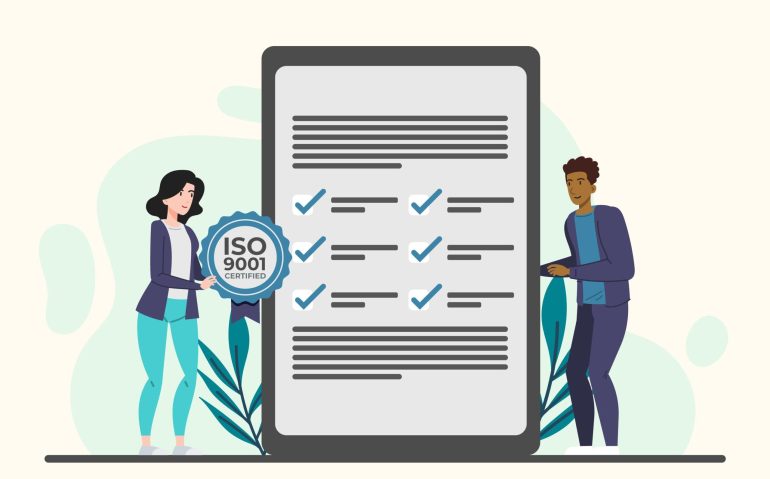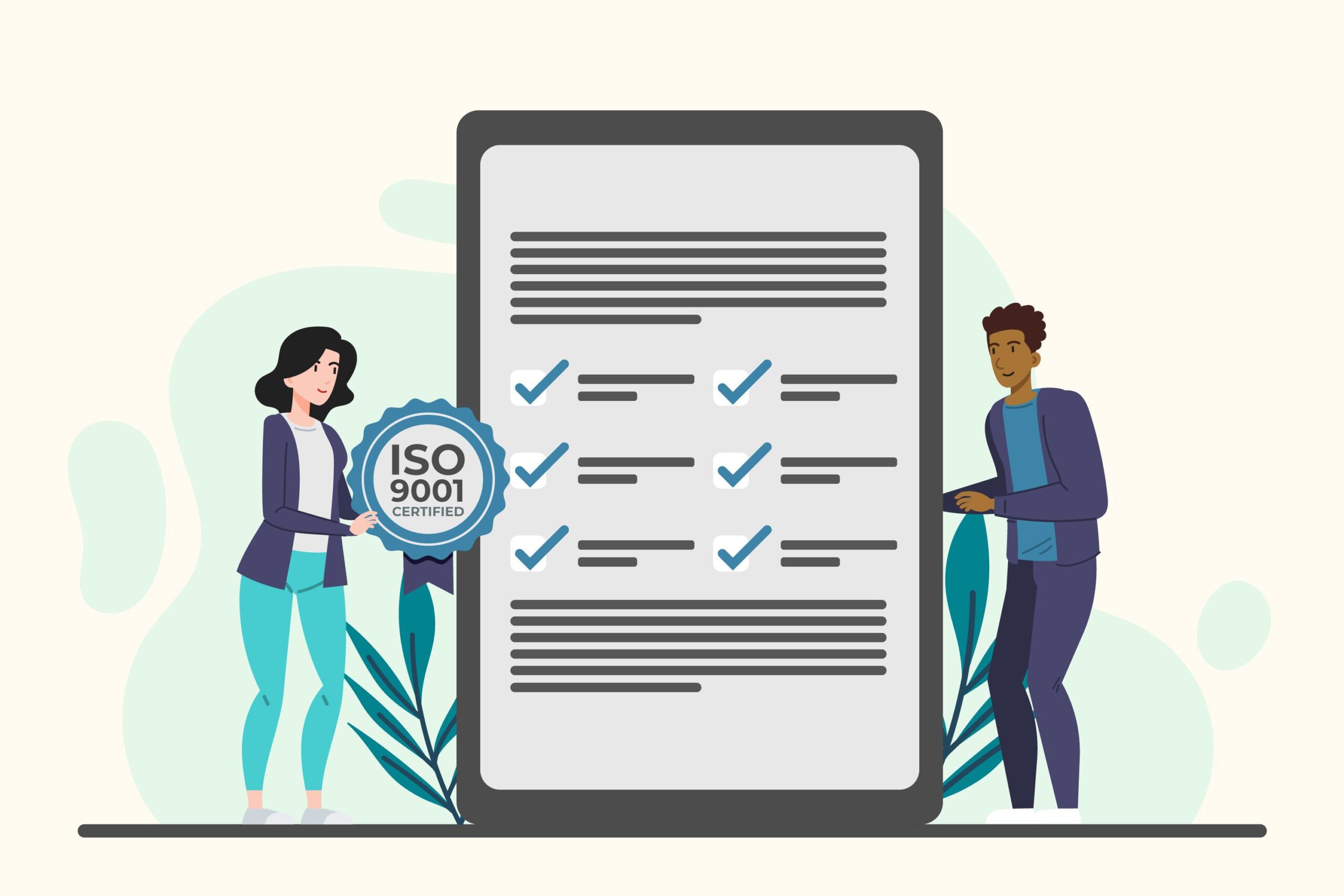
Solving Prior Authorization Issues: Best Practices for Healthcare Providers

With the increasing complexity of healthcare policies and the demands for cost containment from insurance payers, the importance of efficiently navigating the prior authorization landscape has never been more critical. Addressing these issues not only helps in reducing healthcare costs but also plays a pivotal role in enhancing patient access to timely and appropriate care.
The forthcoming sections will explore the multifaceted nature of prior authorization, from understanding its foundational processes to the evolving healthcare policies impacting it. We will delve into how technological innovations, including electronic health records and health information exchange, are transforming prior authorization procedures, improving speed and accuracy for healthcare providers. Through a series of case studies, the article will highlight successful strategies in overcoming prior authorization hurdles, fostering better collaboration between healthcare providers, patients, and insurance entities like Medicare Advantage plans and Centers for Medicare and Medicaid Services. Finally, we will examine ongoing advocacy efforts and future directions in healthcare reform aimed at reducing health care disparities and advancing health care equity, underpinning the collaborative effort required to refine and streamline the prior authorization process for all stakeholders involved.
Understanding the Prior Authorization Process
Definition and Purpose of Prior Authorization
Prior authorization, often abbreviated as PA, is a management process adopted by insurance companies to determine whether a prescribed product or service will be covered under a patient’s insurance plan. This process is also known as precertification, pre-authorization, prior approval, or predetermination. The primary purpose of prior authorization is to ensure that treatments or medications prescribed are medically necessary and are covered under the patient’s insurance policy, thereby managing costs and utilization effectively. Healthcare.gov defines prior authorization as the approval from a health plan that may be required before a service or medication is dispensed, ensuring coverage by the patient’s plan.
Common Challenges and Patient Impact
The prior authorization process introduces several challenges that affect both healthcare providers and patients. One significant issue is the administrative burden it places on healthcare providers, requiring them to fill out extensive paperwork, make phone calls, and send faxes to obtain necessary approvals. This process not only consumes valuable time but also diverts attention away from direct patient care, increasing the workload on healthcare professionals.
Patients face substantial impacts due to the delays inherent in the prior authorization process. Delays in receiving approval for necessary medications or treatments can lead to worsening conditions, especially in urgent cases such as cancer treatment, where any delay can critically alter the outcome. According to a survey, a significant percentage of physicians reported that prior authorization procedures have led to adverse events, including hospitalization due to delays in treatment. Additionally, the opaque and unpredictable nature of the prior authorization process often leads to patient dissatisfaction and can result in patients abandoning their treatment plans altogether.
The process is further complicated by the variability in approval times, which can range from days to weeks, and is often longer for patients with noncommercial payers like Medicare and Medicaid. This not only exacerbates health disparities but also increases the risks of poor outcomes and hospitalization when patients do not receive timely care.
In response to these challenges, some healthcare providers are turning to technological solutions to streamline the prior authorization process. For instance, integrating electronic health records with insurance providers’ systems can help reduce delays and improve the accuracy of submissions. Additionally, some practices assign dedicated staff to manage prior authorizations, which can help improve efficiency and reduce the burden on healthcare providers.
Moreover, advocacy for reducing the reliance on prior authorization is growing among healthcare professionals and organizations. They argue that the process often unnecessarily complicates patient care and advocate for legislative changes to limit the use of prior authorizations.
For healthcare providers looking to navigate prior authorization challenges effectively, partnering with a medical billing outsourcing company like Wenour can be beneficial. Wenour specializes in streamlining billing processes, including handling prior authorizations, which can significantly reduce administrative burdens and improve patient care outcomes. Learn more about their services.
Evolving Landscape of Healthcare Policies
Recent Federal and State Regulations
The Centers for Medicare & Medicaid Services (CMS) have recently finalized the CMS Interoperability and Prior Authorization Final Rule (CMS-0057-F), which aims to enhance the electronic exchange of health information and streamline prior authorization processes across various programs including Medicare Advantage, Medicaid, and the Children’s Health Insurance Program (CHIP). This rule mandates that impacted payers improve their health data exchange and prior authorization procedures, potentially saving an estimated $15 billion over ten years. Additionally, CMS has introduced new regulations that apply uniform prior authorization standards across almost all insurance programs it oversees, which include ACA Marketplaces, Medicaid, CHIP, and Medicare Advantage plans. These regulations are designed to expedite decision times for prior authorization but do not modify the clinical criteria used by plans to make these decisions.
State-level changes are also noteworthy. For instance, E2SHB 1357 has revised prior authorization requirements for commercial health plans, modifying decision timelines and submission standards to enhance clarity and compliance.
Impact on Medicare Advantage and Medicaid
The effects of these regulations are particularly significant for Medicare Advantage and Medicaid plans. For example, Medicare Advantage and Medicaid plans are now required to make standard prior authorization decisions within 7 calendar days and expedited decisions within 72 hours of receiving prior authorization requests for medical treatment. This change aims to reduce administrative burdens and prevent delays in patient care, which can be critical for timely medical interventions.
Moreover, CMS has taken steps to ensure that Medicare Advantage plans do not require reauthorization of care during the first 90 days when an enrollee is new to Medicare or switches plans, providing a smoother transition for enrollees. For Medicaid, the adoption of electronic prior authorization processes, such as the Health Level 7 (HL7®) Fast Healthcare Interoperability Resources (FHIR®) API, demonstrates the potential for increased efficiency and reduced time delays, which were previously a significant challenge.
These regulatory changes and technological advancements are designed to improve the healthcare experience by minimizing the time and complexity associated with prior authorizations, thus allowing healthcare providers to focus more on patient care rather than administrative tasks.
Technological Innovations and Solutions
Adoption of Electronic Prior Authorization (ePA)
The healthcare industry is increasingly adopting electronic prior authorization (ePA) to streamline the medication prior authorization process. This technology allows providers to submit prior authorization requests and supporting documentation electronically and receive determinations from health plans more efficiently. Electronic prior authorization has been shown to decrease processing and turnaround times for these decisions, significantly enhancing the speed at which patients can receive necessary treatments. However, the adoption of ePA faces challenges such as lack of access and incomplete or inaccurate information on prior authorization requirements at the point of prescribing. Efforts to standardize prior authorization requirements and better integrate ePA into provider workflows are essential to reduce the burden and treatment delays associated with prior authorization.
Role of APIs in Streamlining Processes
Application Programming Interfaces (APIs) play a crucial role in the modernization of health information exchanges between providers, payers, and patients. The CMS Interoperability and Prior Authorization Final Rule mandates that payers, including Medicare Advantage plans, Medicaid, and CHIP, as well as qualified health plans on the ACA Marketplace, make prior authorization information accessible through four specific APIs. These APIs are designed to facilitate the exchange of claims and clinical information, making it easier for healthcare providers to access and share necessary data for prior authorization decisions.
- Patient Access API: Allows patients to opt-out of having their information accessed, ensuring privacy and control over personal health data.
- Provider Access API: Enables providers to access their patients’ health information, which can be crucial for timely medical decisions. This API is particularly useful for in-network providers who need to access data for newly referred patients.
- Payer-to-Payer API: Facilitates the transfer of a patient’s health information between old and new insurers, potentially eliminating the need for re-authorization of treatments when patients change their health plans.
- Prior Authorization API: Utilized directly in the prior authorization process to streamline the submission and response of prior authorization requests.
The integration of these APIs into the healthcare system is expected to improve the efficiency of the prior authorization processes by providing faster access to necessary information and reducing the administrative burden on healthcare providers. Furthermore, the use of FHIR-standard APIs for bi-directional data exchange is set to revolutionize how health information is transmitted between different systems, promising significant improvements in the speed and accuracy of healthcare services.
For healthcare providers looking to navigate prior authorization challenges effectively, partnering with a medical billing outsourcing company like Wenour can be beneficial. Wenour specializes in streamlining billing processes, including handling prior authorizations, which can significantly reduce administrative burdens and improve patient care outcomes. Learn more about their services.
Case Studies: Overcoming Prior Authorization Hurdles
Examples of Efficient Prior Authorization Practices
In addressing the challenges of prior authorization, some healthcare providers have implemented innovative solutions that streamline the process and improve patient care outcomes. For instance, MultiCare Connected Care utilized the HL7®FHIR interoperability standards to automate bidirectional data exchange for prior authorizations. This technology enabled providers to submit authorization requests directly from their electronic medical records (EMR), receiving decisions in near real-time. By integrating payer submission requirements and necessary clinical documentation within their EMR workflow, MultiCare Connected Care significantly reduced the manual effort required, enhancing efficiency across the board.
Similarly, NSPG discovered an unused prior authorization tool within their electronic medical record system during a two-day improvement event. By incorporating this tool into their new process, the completion of medication prior authorization forms was reduced from 30 minutes to just 2 minutes. This adjustment not only expedited the approval process but also improved staff morale and patient experience, as wait times for medication decreased dramatically.
Success Stories from Healthcare Providers
One notable success story involves a patient with severe eczema treated by Dr. Resneck, a San Francisco dermatologist. Dr. Resneck prescribed a targeted biologic medication that significantly improved the patient’s condition, allowing him to return to work and sleep better. However, challenges arose when the insurance company initially rejected a prior authorization request for a prescription refill, citing that the patient no longer met the severity criteria because the treatment was effective. After persistent efforts and over 20 additional phone calls, Dr. Resneck successfully secured the refill, highlighting the critical need for flexible prior authorization processes that consider patient outcomes.
Another impactful case is Trombley’s initiative at NSPG, where she used her training to streamline their medication prior authorization process. By implementing a new system that utilized data within the EMR to pre-populate forms and communicate directly with medical assistants, the process time was reduced significantly. This change not only reduced the administrative burden but also decreased the turnaround time for responses from insurance providers from 5 days to less than 1 day. This improvement has been rolled out across multiple NSPG locations, demonstrating the scalability and effectiveness of such innovations.
For healthcare providers looking to navigate prior authorization challenges effectively, partnering with a medical billing outsourcing company like Wenour can be beneficial. Wenour specializes in streamlining billing processes, including handling prior authorizations, which can significantly reduce administrative burdens and improve patient care outcomes. Learn more about their services.
Advocacy and Future Directions
Role of Healthcare Advocacy in Policy Changes
Healthcare advocacy has played a pivotal role in shaping policies that address the challenges of prior authorization. At the AMA National Advocacy Conference, it was evident that the voices of physicians and medical society staffers are influential in driving regulatory changes. The introduction of new federal rules on prior authorization was directly influenced by these advocacy efforts, aiming to reduce patient delays and streamline processes for healthcare providers. The AMA’s concerted actions have led to significant policy shifts, including the implementation of rules designed to decrease the administrative burdens on physicians, thus facilitating more efficient, evidence-based patient care.
Emerging Trends and Potential Reforms
The landscape of prior authorization is continually evolving with several emerging trends and potential reforms aimed at enhancing the efficiency and effectiveness of the process. The AMA has advocated for a reduction in the overall volume of prior authorizations and increased transparency of requirements. Furthermore, promoting automation and ensuring timely care are central to their reform agenda.
Federal and state regulations are also adapting. The CMS has finalized rules that not only streamline the prior authorization process but also promote greater transparency and improve the electronic exchange of healthcare information. These changes are expected to improve patient access to care and reduce the time clinicians spend on paperwork, potentially saving billions over the next decade.
At the state level, advocacy efforts continue to focus on enacting prior authorization reform using model legislation and resources provided by the AMA. These efforts have already resulted in the enactment of new state laws and are supporting ongoing legislative initiatives aimed at further reform.
In summary, the role of healthcare advocacy in policy changes is crucial. It not only influences the creation of more favorable regulations but also ensures that these changes are implemented in ways that genuinely benefit both healthcare providers and patients. The ongoing dialogue between healthcare professionals, advocacy groups, and policymakers is essential for the continuous improvement of the prior authorization system.
Conclusion
Throughout the exploration of prior authorization challenges and solutions within the healthcare industry, we underscored the pivotal role of efficient navigation and management processes that significantly enhance patient care. Strategies such as adopting electronic prior authorization (ePA), leveraging the capabilities of application programming interfaces (APIs), and engaging in healthcare advocacy illuminate a pathway toward mitigating administrative burdens and fostering timely patient access to necessary treatments. These actions, coupled with the support of technology and targeted reforms, offer a promising trajectory toward ensuring that healthcare providers can focus more on patient care and less on the complexities of insurance protocols.
The collaboration between healthcare providers, insurers, and technology partners, exemplified by medical billing outsourcing companies like Wenour, underscores a vital strategy in addressing the intricacies of prior authorization processes. By streamlining billing and authorization procedures, companies like Wenour not only alleviate the administrative workload on healthcare professionals but also contribute to the realization of more efficient, patient-centered care systems. As the healthcare landscape continues to evolve, the integrated approaches discussed signal a commitment to innovation, advocacy, and reform that seeks to uphold the sanctity of patient care above all. Discover more about Wenour’s commitment to enhancing healthcare processes at www.wenour.com, and take a step towards simplifying the complexities inherent in healthcare management.
FAQs
How Can the Prior Authorization Process Be Enhanced?
To streamline the prior authorization process, consider implementing these strategies:
- Compile a comprehensive list of procedures that necessitate prior authorizations.
- Record the reasons for any denials to better navigate future submissions.
- Subscribe to newsletters from payors to stay abreast of any changes or updates.
- Keep up with evolving industry standards.
- Allocate the task of managing prior authorizations to specific staff members to ensure consistency and efficiency.
How Should You Respond to a Prior Authorization Denial?
In the event of a prior authorization denial, either the patient or an authorized representative (like the treating physician) has the right to appeal the decision made by the health plan. This appeal must be based on either the medical necessity of the service or limitations of benefits. Typically, there is a window of up to 180 days from the date of denial to submit an appeal.
What Are Some Common Procedures That Often Require Prior Authorization?
Several procedures and tests commonly need prior authorization from insurers, including:
- Diagnostic imaging tests such as MRIs, CT scans, and PET scans.
- Durable medical equipment like wheelchairs, home oxygen supplies, and patient lifts.
- Infusion therapy.
- Various inpatient procedures.
- Skilled nursing visits and other forms of home health care.
Who Bears the Responsibility for Securing Preauthorization?
The responsibility for obtaining prior authorization falls to the healthcare provider if they are within the patient’s insurance network. They will initiate the process on behalf of the patient. However, if a patient opts for a healthcare provider outside of their plan’s network, it becomes the patient’s responsibility to obtain the necessary prior authorization.























